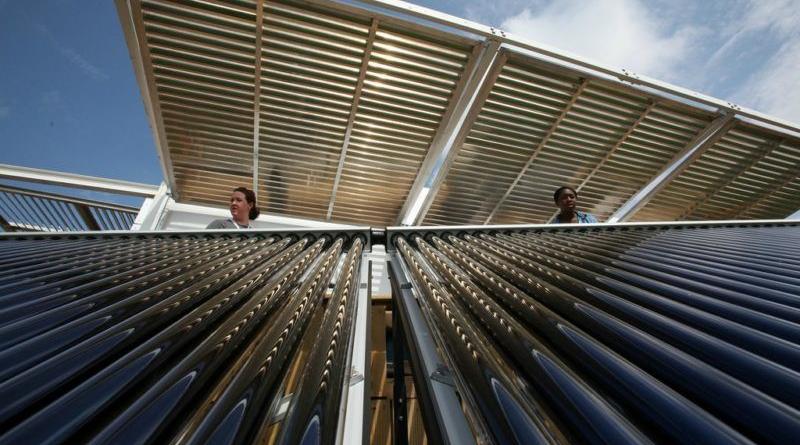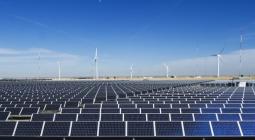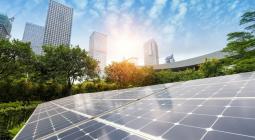‘Renewables could supply almost 80% of heating and cooling by 2050’.

Reaching the EU’s target of increasing renewable heating and cooling by 1.3% each year will require a diverse array of solutions, says the European Commission’s Hans van Steen.
Hans van Steen is acting director for renewables, research and innovation, and energy efficiency in the European Commission’s directorate for energy. He responded in writing to questions by Dave Keating, EURACTIV’s environment correspondent.
///
The EU has adopted an indicative target in the revised Renewable Energy Directive of a 1.3% increase in renewables in heat starting in 2021. How difficult will it be to reach this target, and what happens if it isn’t met?
Heating and cooling consumes around half of the EU’s energy. Without tackling this sector the EU’s decarbonisation goals cannot be realised. That is why it is a significant political achievement that the European Parliament and the Council accepted the Commission’s proposal to include a dedicated target for this sector in the revised Renewable Energy Directive. The indicative 1.3% average annual increase will spur targeted efforts to address this sector.
The Commission is currently assessing the draft Integrated National Energy and Climate Plans (NECPs) that member states have prepared under the new Energy Union Governance framework. The Commission may issue recommendations to countries by 30 June 2019 to amend the draft NECP. Member states then have until the end of 2019 to submit their final NECP.
Given the novelty of the EU policy on heating and cooling, and because this is the first time that a dedicated EU legal framework was put in place, the structured dialogue between the Commission and member states set up under the governance framework will provide the instruments to help member states deliver the 1.3% annual increase between 2021 and 2030. The Commission will closely follow the integrated NECPs and their implementation, including in various regional energy cooperation fora.
How far can you go with electricity in bringing renewables into the system, and where does electricity reach its limits? Once you’ve exhausted electricity options, how can you bring renewables penetration further while keeping costs reasonable?
Under the revised Renewable Energy Directive, renewable electricity used in heating does not count towards the indicative target. What counts is ambient energy used by electric heat pumps provided the heat pumps meet certain energy performance thresholds. In as far as the electricity driving those heat pumps comes from renewable energy sources, this will count towards the share of renewables in the electricity sector, not in the heating sector.
It is important to note that electrification helps decarbonisation only if the heating appliances are driven by carbon-free electricity. This electrification is a good option particularly in those countries where variable renewable electricity – e.g. wind or solar – has a high share in the electricity system, as heating systems can provide balancing and storage services to the electric grid relatively cheaply compared to many other options.
Electrification of heating is not in opposition to district heating. District heating can very well use large heat pumps and provide seasonal thermal storage for renewable electricity and in that way contribute to the electrification of heating in the same way that heat pumps installed in individual buildings or factories do. Such an evolution of district heating systems is already well underway and we expect this trend to continue, as the share of renewable electricity will grow further in a progressively decarbonising energy sector.
Heating and cooling accounts for about half of energy demand. How has the EU’s long-term 2050 strategy taken this into account?
The EU’s Long-Term Strategy is a strategic vision for a climate neutral economy by 2050. It covers all major sectors and nearly all EU policies for a concerted effort to keep temperature increases well below 2°C and preferably below to 1.5°C.
The Strategy examines a wide portfolio of decarbonisation options, including in industry and buildings, which are the main consumers of heating and cooling. The scenarios show a significant reduction in heat demand, especially in buildings, where heating demand for the residential sector decreases by between 53% and 69% compared to 2005. High renovation rates, improvement in the energy performance of heating equipment coupled with building automation, control and smart systems are key measures to such demand reduction. The scenarios of fuel switch possibilities focussed on ‘electrification’ via the increased deployment of heat pumps, bio-fuels, e-hydrogen, and e-gas from renewable electricity.
The Strategy demonstrated that renewables could supply almost 80% of heating and cooling consumption by 2050 in buildings and industry together. Sector integration through interconnected smart infrastructures proved to be instrumental for these decarbonisation results.
The key building blocks of the scenarios for heating and cooling are energy efficiency, the deployment of renewables, sector integration, the application of circular economy and bio-economy complemented with carbon capture and storage to tackle the remaining emissions in industry. The Strategy has shown that decarbonisation of heating and cooling is entirely feasible and the EU building stock can become net zero carbon by 2050.
The up-front costs for switching from gas heat to heat pumps is quite high. What can the EU do to lower this cost burden and encourage more take-up? Could taxation changes make a difference?
The EU disposes of an array of different funding and financial instruments to support the deployment of clean energy and low-carbon innovation. In the coming years it will be essential to boost additional investments in the deployment of mature renewables and energy efficiency solutions and increase their scale so they can become cheaper.
To do so, it is important to use public support to improve the risk profile of decarbonisation projects, and ensure easier access to financing for the modernisation of heating systems and the renovation of buildings. That is why the proposals for the EU’s new Multiannual Financial Framework expand existing financing initiatives and significantly scale up funding for clean energy for the 2021-2027 period.
In parallel to incentivising the use of clean energy sources, the taxation regime should better reflect the full external costs of goods and services, in particular by the consistent application of the “polluter pays” principle. The Commission’s 2018 energy prices and costs report showed that fossil fuel subsides, notably in the form of tax reductions and exemptions remain in place, despite the objective of the Energy Union to phase-out environmentally harmful subsidies. More efficient taxation decisions would make it possible to implement a more environment friendly energy policy and support the ambitious EU goals on climate change.
That is why the Commission on 9 April presented its views on avenues for areas of EU taxation policy with a view to ensuring more coherence between taxation and the clean energy transition.
System integration – bridging different energy sources and sectors together – has been floated as something which can help meet the target. Will the Commission incorporate this idea in the future gas package expected in 2020?
Sector integration is a key enabler for the decarbonisation of heating and cooling which will make it possible to achieve higher levels of renewables, increase energy efficiency, make consumers and industry a more active part of the supply system and allow decarbonisation at lower costs compared to when each sector has to decarbonise separately.
There are many possibilities for sector integration for heating and cooling. For example, individual heat pumps and district heating systems equipped with electric heat pumps, thermal storage and cogeneration units can provide balancing and storage services to both the electric grid and heat systems. One example could be to use surplus renewable electricity to produce e-gases and e-hydrogen, which can become new fuels for heating, while providing energy storage and balancing for the electric grid. Also, waste heat from the industrial or tertiary sector could supply cheap space heating or cooling sources for buildings, if they are linked to district heating systems, etc.
The Commission is currently exploring how sector integration can be further promoted, and what are the necessary enabling market and regulatory conditions.
*This article is part of our special report Decarbonising heat.
23 April 2019





